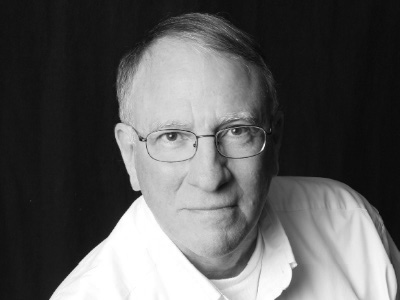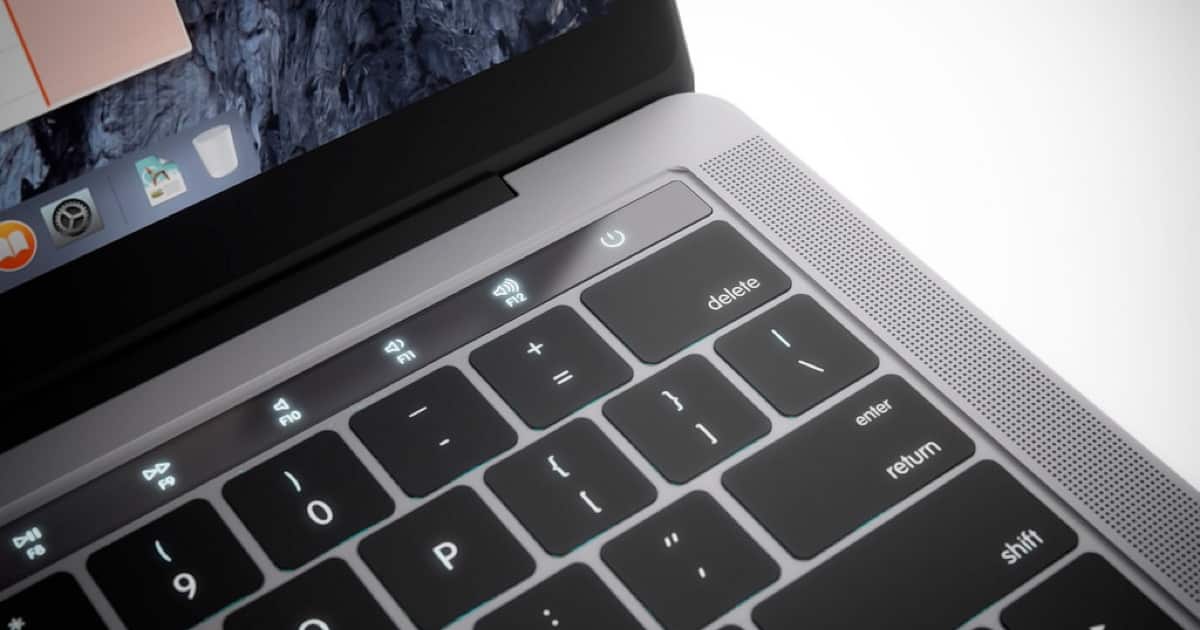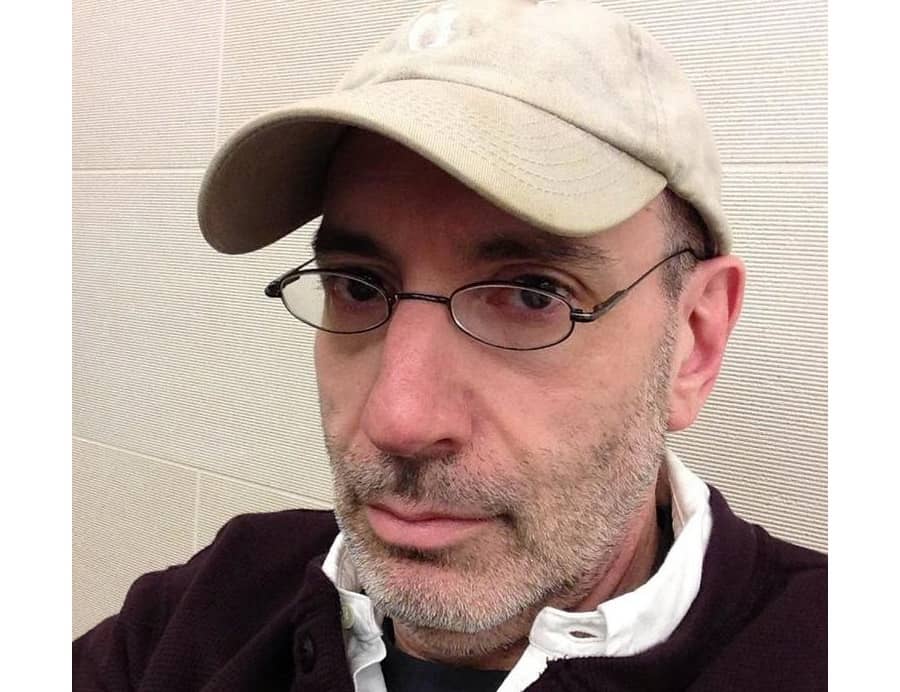Peter Cohen is the managing editor of the Backblaze blog. Previously, he’s written for Macworld, The Loop and iMore. Peter talked about how, as a kid, he had a TI-99/4A with bit-mapped graphics. He drew images on graph paper, converted the patterns to Hexadecimal codes and wrote to the display with Basic. The result was color graphics of spaceships shooting at each other. When he first saw the 1984 Macintosh with MacPaint, “it was like the top of my head blew off.” In the second segment, Peter and I chat about how Tim Cook is doing, Apple and its desktop Macs, whether the iPad Pros can replace the Mac and robotics. Peter is very much tuned in and speaks with wisdom on all these subjects. You’ll want to tune in too.

John Martellaro
John Martellaro was born at an early age and began writing about computers soon after that. With degrees in astrophysics (B.S.) and physics (M.S.), he has worked for NASA, White Sands Missile Range, Lockheed Martin Astronautics, the Oak Ridge National Laboratory and Apple. At Apple he worked as a Senior Marketing Manager, a Federal Account Executive and a High Performance Computing manager. His interests include chess, science fiction and astronomy. John is the host of the TMO podcast Background Mode.
Articles by John Martellaro
There Ain't No Such Thing as Free TV (TANSTAFTV)
The science fiction writer Robert Heinlein reminded us that there’s no such thing as a free lunch. (TANSTAFL). The same applies to TV. If you watch TV over the air, there will be commercials. Lots. If you subscribe to cable, most channels will also have commercials. If you stream or buy content that doesn’t have commercials (Blu-ray or the OTT services) you will pay what the industry sees fit for you. While cord cutting looks to be appealing cost-wise, for now, the industry is never going to settle for decreased revenues in the long run. A recent Hulu decision proves that.
Autonomous Vehicles Might Develop Superior Moral Judgment
Much has been written now about the moral guidance for autonomous cars and trucks. It’s a difficult problem that involves quantifying then instantiating into software the logic of life and death decisions. It would be nice for society to have more time to ponder, but the pace of technology leaves us precious little time for that. Machines are going to make moral decisions very soon. Shall we let them?
Apple's Mac Problem Could Soon be a Mac Crisis
Apple is long overdue for a refresh of its Macintosh line. The last Mac mini update was October 2014. The 2013 Mac Pro has never been updated. The last MacBook Pro (15-inch) was updated in May of 2015. The company still sells a 2012 13-inch MacBook Pro with a SuperDrive. Only the iMac and MacBook lines are less than a year old. The Verge lays it all out and questions why Apple isn’t keeping most of its Macs more current. Yet there are glimmers of hope. It’s all on page 2 of Friday’s Particle Debris.
TMO Background Mode: Interview with Former Apple Sr. Manager & Entrepreneur Dan Burcaw
Dan Burcaw is a former Apple Senior Manager and founder of several notable businesses. In 1999, Dan was the co-founder and CTO of Terra Soft Solutions, developers of the legendary Yellow Dog Linux. That Linux, running on PowerPC was well received by the U.S. Government, businesses and the U.S. Navy. Later, after graduating from college, he worked for Apple as a Senior Manager in retail. In 2008, he founded Double Encore in Denver, a company that specialized in producing iOS apps for clients such as The PGA Tour and Turner Broadcasting. Most recently, Dan was a Senior Director, Product Management at Oracle where he led efforts to build a mobile app marketing capability. Dan is currently working on his next big, secret project. Come listen as Dan describes his fascinating career arc.
Perseus Smart Mirror Interfaces to Your iPhone
The Perseus smart mirror is a Kickstarter project. It’s a hybrid mirror and display of the home screen of your smartphone via Wi-Fi. The developers explain: “Imagine this: a weather alert pops up while you are brushing your teeth and reminds you to bring your umbrella. As you adjust your hair, a text message from your boss appears at the bottom of the screen. Best of all, there’s no need to put down that hair product – the mirror is controlled through simple voice recognition menus…. It looks like something right out of a sci-fi movie.” It really does. This Kickstarter project is almost halfway to its funding goal, and delivery is expected in April 2017. Early bird slots are filled, but you can get in now for US$219.
A Computer with Lights, Get Inside, See What's Happening
It’s 10 meters long and 2 meters high. It’s made of discrete transistors and LEDs. You can actually see what’s going on. Is it a real working computer? Yes. Can you program it? Yes. Why was it made? The developer, James Newman, says, “Computers are quite opaque, looking at them it’s impossible to see how they work. What I would like to do is get inside and see what’s going on. Trouble is we can’t shrink down small enough to walk inside a silicon chip. But we can go the other way; we can build the thing big enough that we can walk inside it. Not only that we can also put LEDs on everything so we can actually SEE the data moving and the logic happening.” Behold, the Megaprocessor
Are Humans Becoming Robotic Faster than Robots Can be Human-like?
People are walking around, staring at their iPhones, mesmerized by messages and selfies. They’re reading lurid news, glued to YouTube videos and immersing themselves in Pokémon GO. Is this robotic behavior slowly replacing typical human behavior? Is it happening faster than robots can become more human? Could robots someday role reverse and become more human than we used to be? Page 2 of Friday’s Particle Debris expands the initial discussion and leaves us to ponder.
TMO Background Mode: Interview with SCC Director of Mobile App Development Tim DeBenedictis
Tim DeBenedictis is the co-developer of the astronomy sky charting app SkySafari. He’s now the Director of Mobile Application Development at Simulation Curriculum Corp. Tim was first inspired by the sky as a youth going on camping trips and being able to see the stars at night, something city dwellers seldom see. His dad was an avid bird watcher and always had a birding scope on the trips. One night, they pointed the scope at Jupiter and its moons. Tim described it as captivating and launched his interest in amateur astronomy. Later, that led to being a planetary science major at M.I.T. where he developed an extensive C++ code base for celestial mechanics. Years later, with that expertise, he co-developed SkySafari for the Mac, iOS and Android. Come take a grand celestial tour with us.
My Year With the Stellar 2015 MacBook and Life With USB-C
John has had his 2015 MacBook with its single USB-C port for a little over a year now. Here’s his complete first report on life with that Macintosh notebook and daily life with USB-C. Did he regret an early engagement with USB-C? Read on.
Tim Cook: 'Think of Apple TV as a Foundation for Broader Business'
It might be tempting to think about the Apple TV as a hardware device, and its associated revenue combined with apps that deliver content and the associated revenue collected by Apple. But, during Apple’s 2016 Q3 earnings report, CEO Tim Cook said that we should think about the Apple TV in a different way.
How to Display the macOS/OS X Version From the Command Line
There may be occasions when one wants to verify what OS X version is running on a Mac. We all know how to do it from the GUI with “About This Mac,” but John shows us how to do it from the UNIX command line when necessary.
The Case For a Shatterproof iPhone
The iPhone’s display is made of Corning’s gorilla glass. It’s durable, but not indestructible. As a result, most iPhone customers (try to) protect their investment with a case. Should Apple try to make the iPhone shatterproof? Is it possible? Will a case be, someday, unnecessary? Or is an iPhone that can be damaged preferable in some respects? Page two of Friday’s Particle Debris explores.
TMO Background Mode: Interview With Ken Ray, Host and Producer of ‘Mac OS Ken'
Ken Ray is the host and producer of several notable podcasts, including the Mac OS Ken shows. It’s not surprising that Ken started out in radio broadcasting. Early on, he was a behind the scenes person at a small radio station in Boston. There, he became operations director and learned a lot about radio tech without the on-air disc jockey pressure. He learned the station’s digital editing suite, and that led to producing some commercials and radio shows. Later, at ZDTV radio, he had the opportunity to interview some high-profile people: Jesse Jackson and Ray Kurzweil. It’s not hard to see how, after he fell into the world of Apple, he brought all his skills to bear into a whole suite of modern-day podcasts, including work with Rod Roddenberry, Gene’s son.
Satechi's Excellent 60 Watt Charging Station: 2 USB-C and 4 USB-A Ports
Satechi has introduced the “60W 6-Port Multi-Port USB Desktop Charging Station.” It’s a pure charging hub that intelligently partitions up to 60 watts of power to four USB-A ports and two USB-C ports. Notable features include a great exterior design, a power LED and an on/off switch. John reviews it.
Apple Customers Seeking 'iPhone Stress Relief'
Despite the evolution of the iPhone, with its ever increasing sophistication, the replacement rate by customers is systematically stretching out. Why is this happening? It’s likely based more on economics, technical maturity and customer stress analysis than a waning appetite for technology. A research chart shows the reality.
TMO Background Mode: Interview with Rogue Amoeba Software Co-founder Paul Kafasis
Paul Kafasis is the co-founder and CEO of Rogue Amoeba Software. His company specializes in stellar audio products for the Mac such as Audio Hijack, Loopback, Piezo and more. His early work with colleagues (2001) was with MacAmp, an MP3 player. That led to the founding of Rogue Amoeba in 2002 and Audio Hijack 1.0. Paul and his co-founders realized that audio was emerging as an important niche where his team had special talent. Paul starts off with the story about how they chose such a memorable name for the company and then explains the evolution of Audio Hijack, then the pro version, and now Audio Hijack 3. We chat about challenges for the Mac developer and why an app like this, and its siblings, are not found in the Mac App Store.
How to Disable the OS X Login Screen Saver
There may be times when you don’t want the OS X login screen saver to kick in. This might apply when, for example, the screensaver engine is acting up, and you don’t want it to activate, ever. John shows how.
A Deeper Look at Apple's 'Macintosh Problem'
Apple’s overall Macintosh sales are in decline, for how long we don’t know. The MacBook Pro is long over due for a refresh. Apple’s Mac Pro has languished. The Mac mini, last updated in 2014, was less than intoxicating. What’s happening? John takes a look.
Apple Needs Supercomputer Expertise to Compete
just over a decade ago, Apple was very much into supercomputers. Organizations were building large supercomputers and small clusters with Apple’s Xserves. But Apple got out of that business and then discontinued the Xserve. One can only wonder what the impact would have been if Apple had decided to maintain its in-house expertise with supercomputers. Today, companies with the best supercomputer power will have a competitive edge. Page 2 of Particle Debris discusses.
TMO Background Mode: Interview with TLA Systems Founder James Thomson
James Thomson is the founder of TLA Systems, famous for the apps Drag Thing and PCalc. He tells the story of growing up in the 1980s in Scotland when the personal computer was on the rise. The 1982 movie Tron captured his imagination and inspired him to buy a Commodore 64. At age 12, his school got its first PC, but no one knew what to do with it! James and just three other students became the “Guardians of the Computer.” Later, his first Mac was at the university in 1990, and he spent a year learning it inside out. The original PCalc, written in Pascal, launched his career as a Mac programmer. Later James worked for Apple in Cork, Ireland. James chats about his development as an indie Apple developer with a host of charming stories.
TMO Background Mode: Former Apple Sr. Director of Product Marketing Michael Gartenberg
Michael Gartenberg is currently the analyst in residence for iMore.com. However, before that, he spent three years as Apple’s Senior Director of Product Marketing, reporting directly to SVP Phil Schiller. Michael tells the story about how he got his gig with Apple. After years of working at various tech industry research firms, he was always on the periphery of Apple and working with Apple executives, especially Greg “Joz” Joswiak and Phil Schiller. Then, one day in 2013, he got phone call from Joz, and it didn’t sound like it was going to be a schmooze session. Michael was alarmed. What could he have done wrong? But Joz wanted to invite Michael to Cupertino for an interview. Listen as Michael tells me how he got hired and what he did at Apple for three years.
A Big Risk for AI Agents is the Creepy Factor
How much assistance do customers really need and want from AI agents? Will the very design of AI agents lend themselves to proving their worth? Or will companies who provide them see AI agents as powerful, undisciplined tools for their own advantage and profit. It’s not clear yet where the market is going, but if any company can do it right, it’s Apple.
Why I'll be Buying a New iPhone 7
Some say, the iPhone 7 will be a yawner. What’s forgotten is that our appetite for new (useful) toys and being state-of-the art always outweighs the cynicism of skeptics and critics. John’s going to have a new iPhone 7, and states why you should think seriously about one too. Ignore the voices that seek control.






















